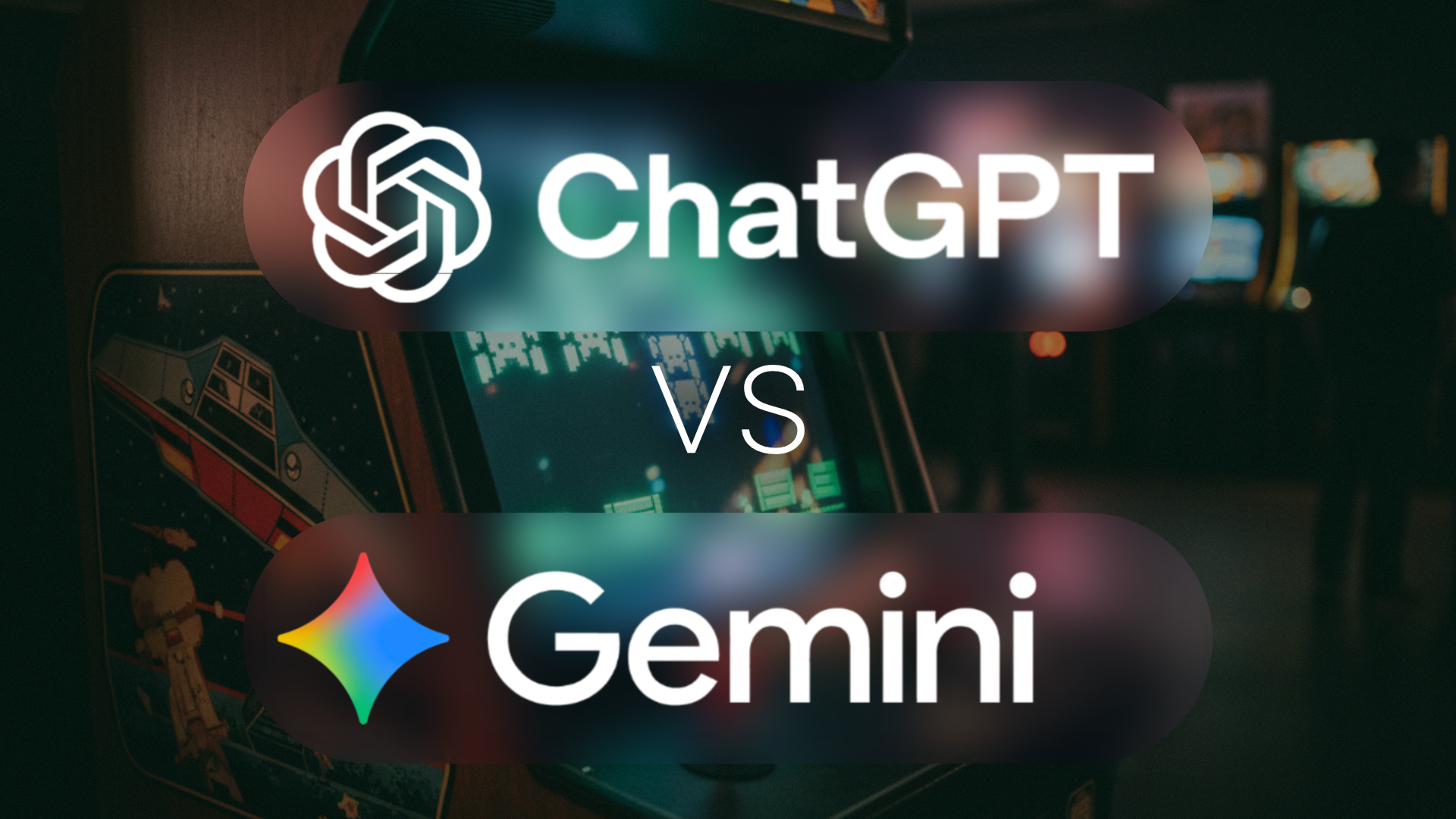

Can artificial intelligence really build your training games?
The hype around AI tools is everywhere. We are told they can write our emails, analyse our data and even design our courses. But can they really create something as complex as an interactive training game?
This question matters. For learning and development teams under pressure to produce content quickly, the idea of “vibe coding” — where you simply ask an AI to code for you, is both exciting and daunting. Could this replace weeks of development time? Or is it just smoke and mirrors?
In this blog, I share my own experiment where I asked ChatGPT 5 and Google Gemini to build a modular Space Invaders-style quiz game for training. The results were surprising.
What is Vibe Coding and Why Does it Matter?
Vibe coding is shorthand for coding by conversation. Instead of opening an IDE and writing lines of code, you describe what you want and let an AI tool generate it. The promise is simple: non-programmers can produce complex applications with natural language prompts.
For the training industry, this is particularly attractive. Imagine telling an AI: “Build me a branching scenario with quiz questions that can be reused across different subjects.” If it worked, you could design interactive modules faster than ever before.
But there are risks. AI models do not actually “understand” the systems they are coding. They generate text that looks like code based on patterns from their training data. This means that while they can often produce impressive demos, the code may break once you step outside the most common scenarios.
The Experiment: ChatGPT 5 vs Google Gemini
To test how well vibe coding really works, I gave both ChatGPT 5 and Google Gemini the same brief:
-
Build a Space Invaders-style arcade game.
-
Incorporate quiz questions every few plays.
-
Use XML and JavaScript files for the questions so the game can be modular and reused.
The aim was not just to create a flashy game but to test whether AI could handle modularity, a principle at the heart of scalable training content.
Watch the full experiment here:
ChatGPT 5: Familiar but Frustrating
ChatGPT knew exactly how to create a Space Invaders clone. Within minutes, it produced a playable version of the classic game. But problems appeared as soon as I asked it to pull in questions from external files.
-
File handling issues: It repeatedly failed to load the XML quiz file and instead generated its own placeholder questions.
-
Error loops: Even after feeding it console errors and asking for fixes, the same issues resurfaced.
-
Focus drift: ChatGPT tended to lock onto the “make a game” request and ignore the “integrate modular questions” part of the prompt.
What became clear is that ChatGPT’s training has included a lot of arcade-style examples. It is very comfortable producing games that look right, but less capable when asked to stretch into less standard structures.
Google Gemini: More Usable Out of the Box
Gemini, on the other hand, managed to do what I wanted on the very first attempt. It loaded the quiz file correctly, integrated it with the game, and displayed real questions in the middle of gameplay.
-
Cleaner structure: The game was more modular and easier to adapt.
-
Responsive to prompts: When I asked for visual changes — more authentic Space Invaders graphics, faster enemy speeds, clearer “game over” states — it delivered them.
-
Fewer repeats: Errors still cropped up but Gemini seemed to handle debugging more gracefully.
The end result was not perfect, but it was significantly closer to something that could actually be used in a training context.
What We Learned About AI in Training
This head-to-head test highlighted a few important lessons for anyone interested in using AI in learning and development.
-
AI can generate ideas, not finished products
Both systems were able to spin up something playable quickly. This shows real potential for AI to support rapid prototyping and brainstorming. -
Modularity is hard
AI often struggles with more complex requirements such as linking external files or reusing structures across multiple games. This is crucial in training where scalability matters. -
Iteration is essential
You cannot simply “ask once and receive.” Both tools required repeated clarification, debugging and checks. Human oversight is not optional. -
Human qualities still matter
Creativity, critical thinking and empathy for learners are not found in the AI. Even if the code runs, the learning design still comes from people.
Is Vibe Coding Ready for Learning and Development?
Right now, vibe coding is fascinating but not reliable. It is best viewed as an experimental tool for generating ideas and quick demos rather than as a replacement for trained developers or instructional designers.
This does not mean it has no place. For a trainer wanting to visualise how a quiz game might look, AI can give a rough sketch in minutes. But if you need a stable, scalable product that can actually be rolled out, you will still need human expertise.
A Smarter Way Forward
While vibe coding is entertaining, most organisations need dependable tools that deliver learning in the formats their people need. That is why Open eLMS Learning Generator exists.
Instead of wrestling with AI models to produce half-finished code, you can take your existing content and instantly transform it into video, PowerPoint, podcasts or even arcade-style games. It is fast, multilingual and creates professional content that is ready to deploy.
You can try it now with a free 14-day trial.
Try Open eLMS Learning Generator
The verdict from this test is clear: Gemini currently outperforms ChatGPT for vibe coding training games. Yet both tools still highlight the same truth. AI can inspire and support, but it is not yet the finished solution.
The real future of learning lies in combining the creativity of people with AI systems that are robust, transparent and reliable. Until then, tools like Open eLMS are a practical bridge between ambition and delivery.

